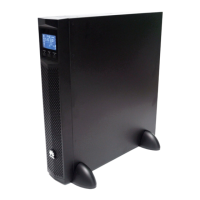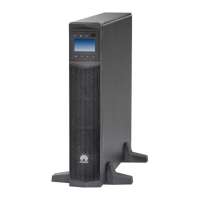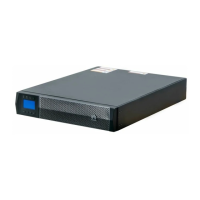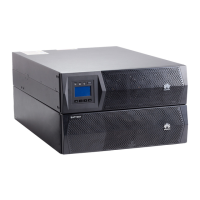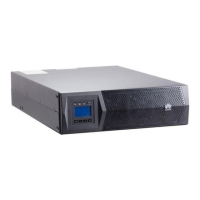to a charger alarm, the batteries can switch between oat charging and
equalized charging only after the alarm is cleared.
Figure G-2 Manual FC for Pos. screen
For the 6 kVA and 10 kVA UPSs, perform manual oat charging, for the 15 kVA and 20 kVA
UPSs, batteries in positive and negative groups are manually switched to oat charging
respectively.
Step 2 Adjust the discharge ratio for the shallow discharge test.
1. On the Main Menu screen, select Settings and press . The Settings login
screen is displayed. The preset password is 000001. After you enter the correct
password and press , the Settings screen is displayed.
2. Choose Battery Parameters and Shallow Discharge, and adjust the
parameters to t actual requirements.
Figure G-3 Shallow Discharge screen
Discharge ratio: indicates the percentage of discharge capacity to the total
dischargeable capacity. The parameter can be set to a value between 10%
and 50%, and the default value is 20%. The parameter is
congurable in any
mode. It is recommended that the value of Discharge ratio not exceed 20%
with the load is light. For example, the value can be 10% or 15%.
Step 3 Start the shallow discharge test: Partially discharge the batteries. After all required
conditions are met, the test command is successfully delivered and the LCD
displays a Succeeded message.
Figure G-4 Shallow Discharge Test screen
If the shallow discharge test command is successfully executed, the charger
disables its output and the system is in battery mode. You can view the battery
information on the default screen (energy
ow diagram). The normal mode
indicator (green) turns o, and the battery mode indicator (yellow) turns on.
UPS2000-G- (6 kVA-20 kVA)
User Manual G Battery Shallow Discharge Test
Issue 18 (2021-07-16) Copyright © Huawei Technologies Co., Ltd. 178
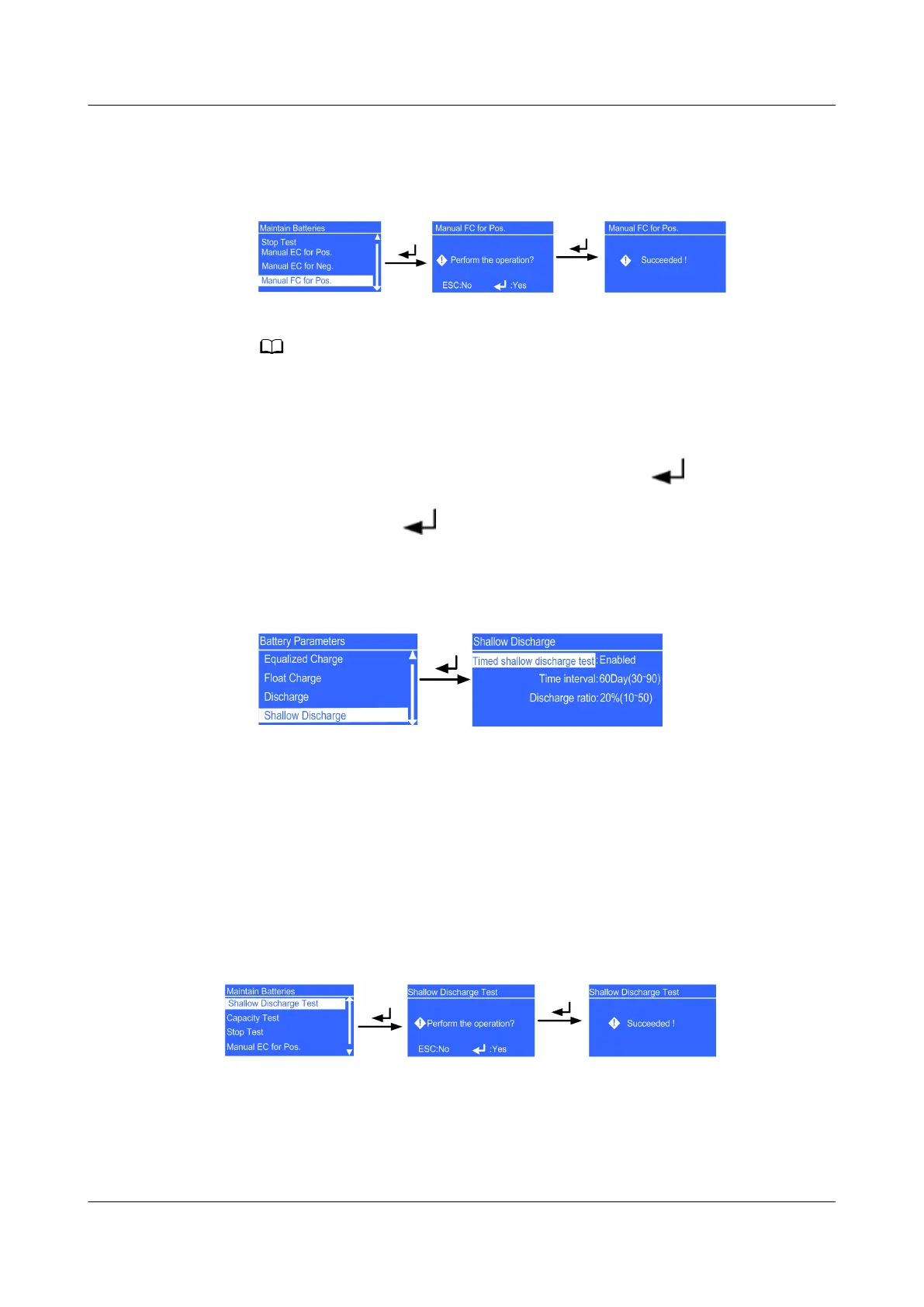